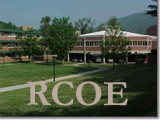Artifact # 11
Competency 13.2: “Use media and technology to support learning for children with special needs.”
Context: First I went to the control
panel (Start button to Settings, then control panel). I double clicked
on “Accessibility Options”. Then I clicked on the “Display” tab.
Then I checked the box that said, “High Contrast.” Then I clicked
“Apply” and it made the words on the screen very big and made the screen
black. This is a helpful tool for anyone who has any type of visual
problem.
Next, I went back to the control panel and
clicked on the “Mouse” icon. Then I clicked on, “double-click speed”.
By doing this a person who cannot use their arms or hands very well can
double-click the mouse as slow as they need too.
I then went to www.ldonline.org.
I read an article called, “First Person”. This is an article written
by an LD student and advice on being an LD student. I also printed
out a page on this site called, “Teacher’s Home Page”. In this article
it tells about a mentor teacher of the month and tells about her strategies
for teaching students with learning disabilities and a little bit of her
background as a teacher and how she started her career.
Finally I went to the website http://www.check-it-out.org,
which is a site for disabled people who use assistive technology.
Assistive technology is any item, piece of equipment or product system,
whether acquired commercially off the shelf, modified, or customized, that
is used to increase, maintain, or improve functional capabilities of individuals
with disabilities. Prosthetics and orthotics, ramps, standing/walking aids,
vehicle modifications, visual/reading aids, and home modifications are
just a few of the assistive technology pieces that you can buy for someone
who is disabled.
Impact: I have now learned how to modify the computer to help my future students with their disabilities. I can change the monitor to, “high contrast” so that people who have seeing problems can see the screen better. I also know how to change the mouse controls so people with arm or hand disabilities can click the mouse slower. I also know what websites to go to if I have a student with disabilities so I can read articles on how to help my students or things that I can get my students who have disabilities to help them live normally.
Alignment: Now that I know how to modify the computer to help students with disabilities and know websites to help me be more informative about people who have disabilities I have met Competency 13.2 and hopefully have enough knowledge to be a understanding and caring teacher to those who have disabilities.
This artifact also aligns with INTASC
Standard 3. It was created to demonstrate my understanding that
teachers need to learn about individual learning differences in students.
This artifact shows many different ways to adapt classrooms with students
with disabilities.
